Plan your Japan trip without
the overwhelm
Stop Using These Anime Phrases in Japan: Here’s What to Say Instead

Planning your dream trip to Japan?
If you’ve watched a lot of anime, you might feel ready to drop lines like "Nanda yo!" or "Ore ga yaru!" the moment you land. But here’s the thing: what works in anime doesn’t always work in real life and some phrases can make you sound rude without even knowing it.
So let’s fix that.
Here are the most common anime phrases tourists (accidentally) use, why they don’t work in Japan, and what to say instead, so you don’t get weird looks at the konbini.
⚠️ 1. 「何だよ」(Nanda yo) → “What the heck?”
❌ Why you should avoid it:
Used in anime to express annoyance or confusion — usually during a fight. In real life? It sounds rude, aggressive, and way too direct.
✅ Say this instead:
すみませんが、これは何ですか?
(Sumimasen ga, kore wa nan desu ka?)
“Excuse me, but what is this?”
➡️ Works great when you’re asking about food, signs, or anything unfamiliar — without sounding like you’re about to start a fight.
⚠️ 2. 「早くしろ」(Hayaku shiro) → “Hurry up!”
❌ Why you should avoid it:
This is a command. Like, full-on boss mode. You’d hear this in anime during high-stress scenes — not in a café.
✅ Say this instead:
急いでいただけますか?
(Isoide itadakemasu ka?)
“Could you hurry, please?”
➡️ Much more polite. Perfect for gently asking to speed things up, like at a restaurant or station — without being demanding.
⚠️ 3. 「俺がやる」(Ore ga yaru) → “I’ll do it!”
❌ Why you should avoid it:
While “I’ll do it” sounds nice, using 俺 (ore) in public can come off as cocky. It’s super casual and mostly used among close friends or in anime when someone wants to sound tough.
✅ Say this instead:
私がやります
(Watashi ga yarimasu)
“I’ll do it” — polite and neutral.
➡️ Say this when offering help (like carrying someone’s bag), and you’ll sound thoughtful, not theatrical.
⚠️ 4. 「お前」(Omae) → “You”
❌ Why you should avoid it:
Anime characters throw this around all the time. But in real life, omae can sound hostile or condescending. Even if you mean well, it often lands wrong — especially with strangers.
✅ Say this instead:
➡️ Don’t use "you" at all.
Japanese works best when you use names (with “-san”) or just skip the subject completely. It’s more natural — and more respectful.
Example: Instead of “Do you want water?” say:
お水、いかがですか?
(O-mizu, ikaga desu ka?)
“Would you like some water?”
🧭 Why It Matters
Anime is fun.
But Japan is real life and real people appreciate politeness, humility, and a bit of effort to adapt.
Using polite Japanese:
Helps you avoid awkward moments
Shows locals you respect their culture
Makes your trip feel more authentic and connected
🧳 Quick Travel Tips (Language Edition)
Use basic polite phrases:
Say すみません (excuse me), ありがとうございます (thank you), and お願いします (please) often. You’ll be golden.Avoid anime slang unless you’re joking with close friends who get it.
Observe how locals speak:
Listen in cafés, shops, trains. Japanese people usually speak softly and with lots of indirect phrasing.
💼 Why Choose My Ready-to-Go Itineraries?
Planning a Japan trip can get overwhelming. I lived in Japan and built the kind of guide I wish I had at the beginning. Here’s what you get:
✅ Clear day-by-day routes 100% customizable
✅ Local spots, not just the touristy ones
✅ Interactive map & Direct Google Maps links
✅ Tips on transport, food, and stays
✅ Works offline. Saves you 100+ hours of research
💌 Get Your Japan Itinerary Now Travel Japan with clarity. No stress. No chaos. Just the adventure, made easy.

Marie creator behind @Tabimawari
Hi, I’m Marie.
French islander from Reunion island, Japan lover, and travel planner behind Tabimawari.
I spent a year living in Kyoto, learning Japanese and falling in love with the culture. Since then, I’ve kept going back, exploring every corner from Tokyo to the tiniest hidden towns.
I created these guides after spending months planning, testing, and fine-tuning every detail so you don’t have to. Inside, you’ll find:
✅ Interactive maps
✅ Step-by-step directions
✅ Local spots + travel tips
✅ Offline use
Each guide is made with care, based on real-life travel, not generic blog advice.
This is what I wish I had on my first trip to Japan and now it’s yours.
MY SOCIALS
MY NEWSLETTER
Japan Monthly by Tabimawari : Subscribe to get a monthly email packed with inspiration, local tips, and events happening across Japan straight from someone who’s lived and traveled a lot.

Marie creator behind @Tabimawari
Hi, I’m Marie.
French islander from Reunion island, Japan lover, and travel planner behind Tabimawari.
I spent a year living in Kyoto, learning Japanese and falling in love with the culture. Since then, I’ve kept going back, exploring every corner from Tokyo to the tiniest hidden towns.
I created these guides after spending months planning, testing, and fine-tuning every detail so you don’t have to. Inside, you’ll find:
✅ Interactive maps
✅ Step-by-step directions
✅ Local spots + travel tips
✅ Offline use
Each guide is made with care, based on real-life travel, not generic blog advice.
This is what I wish I had on my first trip to Japan and now it’s yours.
MY SOCIALS
MY NEWSLETTER

Plan your Japan trip without
the overwhelm
Follow me
Newsletter
Japan Monthly : Subscribe to get a monthly email packed with inspiration, local tips, and events happening across Japan straight from someone who’s lived and traveled a lot.


